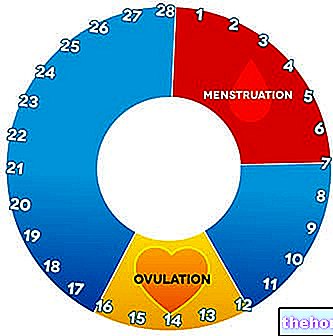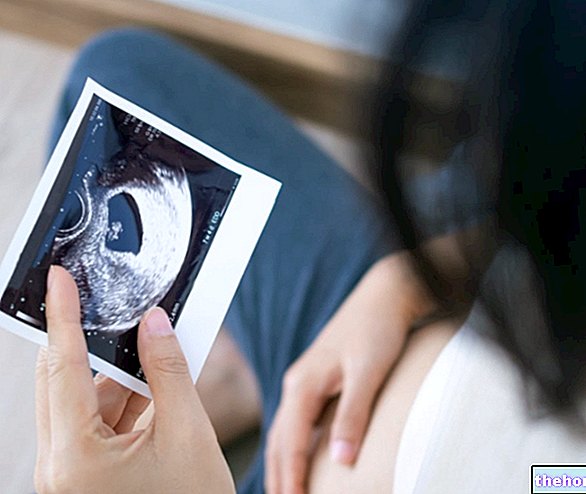See also: in vitro fertilization - infertility problem - ovulation symptoms
Fertilization consists in the "union" of the female egg with one of the many male spermatozoa, to form a cell - the zygote - from which a new life will develop.
Role of Sperm
At the climax of the sexual act, the male ejaculate emerges from the penis and pours into the upper part of the vagina, along with its load of sperm. Overall, this milky liquid called sperm contains approximately 300 million spermatozoa. However, 99% of its volume (1-5 ml) is made up of fluids produced by accessory glands, such as the prostate and seminal glands. secretions have the main function of promoting sperm motility, ensuring their nourishment and survival within the acidic environment of the vagina.

Among the first obstacles present along this path, we remember the cervical mucus, a uterine secretion, which traps the less viable spermatozoa, not completely mature or with unfavorable morphological characteristics, between its meshes. This mucus becomes less hostile in the days between ovulation, that is, in the period most favorable to fertilization.
The spermatozoa that manage to escape the mucus continue their ascent towards the upper part of the uterus, which will be followed by the entry into the tube. It has been calculated that, with the right proportions, the speed of a spermatozoon would be equal to that of a person running at 55 km / h. In reality, given their very small size, their forward speed is rather low, equal to about 15 centimeters per hour (the uterus is about 6-9 cm long and the fallopian tubes about ten cm).
Fertile Period
Normally, fertilization takes place on the same day as the ovarian follicle releases the egg (around the 14th day of the canonical 4-week ovarian cycle). The mature oocyte, in fact, survives for a maximum of 24 hours after release. On the other hand, the spermatozoa deposited by the male can survive up to 4 days in the crypts of the cervical mucosa and from here gradually go up towards the tubes. fertilization takes place in their distal part, ie in the third closest to the ovary.
Meeting sperm - egg cell
Despite the fact that fertilization involves millions of spermatozoa, only one of these is able to fertilize the "egg. The latter," in fact, is protected - albeit loosely - by a layer of cells called corona radiata.
After overcoming this first obstacle, the spermatozoon finds itself in front of another, much more difficult, barrier of a glycoprotein nature, represented by the zona pellucida. In order to cross it, the spermatozoa release powerful enzymes contained in the "acrosome, a vesicle confined in the part. top of their head.
The process, called acrosomal reaction, allows the spermatozoa to dig a small channel for the fertilization of the egg. As mentioned several times, this privilege will be granted only to the first sperm that completes the assault on the oocyte. The fusion of the two cell membranes is very important because:
- stimulates the egg to complete its second meiotic division
- it opens a way that allows the nucleus of the spermatozoon to reach that of the oocyte and merge with it;
- it triggers a chemical reaction, called cortical reaction, which prevents fertilization of the egg by other spermatozoa (prevents polyspermia).
Zygote and Embryo
The union of the nuclei gives rise to a new cell, called the zygote, of 46 chromosomes, 23 of which are inherited from the paternal sperm and 23 of which from the maternal egg cell. The zygote will then undergo a long series of mitotic divisions, which began already in its approach path towards the uterus, in which it nestles after about a week. the continuation of embryonic development is illustrated in this article: development of the fetus embryo after fertilization.
What we want to underline here is that sexual fertilization, as it happens in man and in many other higher organisms, allows the new individual to inherit a combination of paternal and maternal chromosomes among the millions possible.
All this, in addition to explaining why each of us is unique, allows the strengthening of the species, since it is the basis of natural selection, that is to say of that process that favors organisms endowed with the most suitable characters in a given environment. These characters, innate following small random mutations, are inherited, that is, transmitted to the descendants through, in fact, sexual fertilization.









.jpg)


















